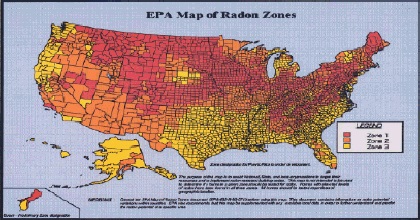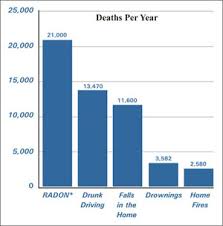It is crucial that we have a signed agreement prior to inspecting your home. In fact, we can't perform an inspection without it. The agreement is provided below in PDF format for your convenience.
RADON FAQs
The following information is provided by the EPA. More information about radon can be found by visiting the EPA's radon site at http://www.epa.gov/radon/
What is Radon?

Radon is a cancer causing, radioactive gas.http://www.kearneyhomeinspections.com/images/user/big_us_radon_zones.jpgIt comes from a natural breakdown of uranium in the soil, rock and water and gets into the air you breathe. Radon typically moves up through the ground to the air above and into your home through cracks, expansion joints and other holes in the foundation.
I have never heard of radon. Is it really that dangerous?
You cannot see, smell, or taste radon. But it still may be a problem in your home. When you breathe air containing radon, you increase your risk of getting lung cancer. In fact, the Surgeon General of the United States has warned that radon is the second leading cause of lung cancer in the United States today. If you smoke and your home has high radon levels, your risk of lung cancer is especially high.
Is radon really as dangerous as cigarette smoke?

